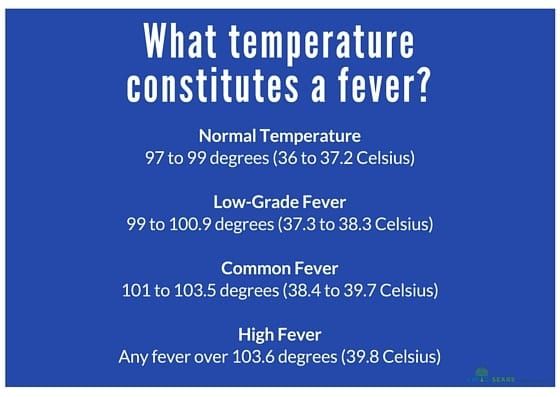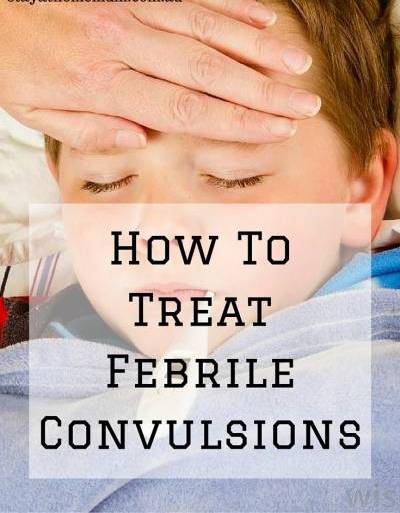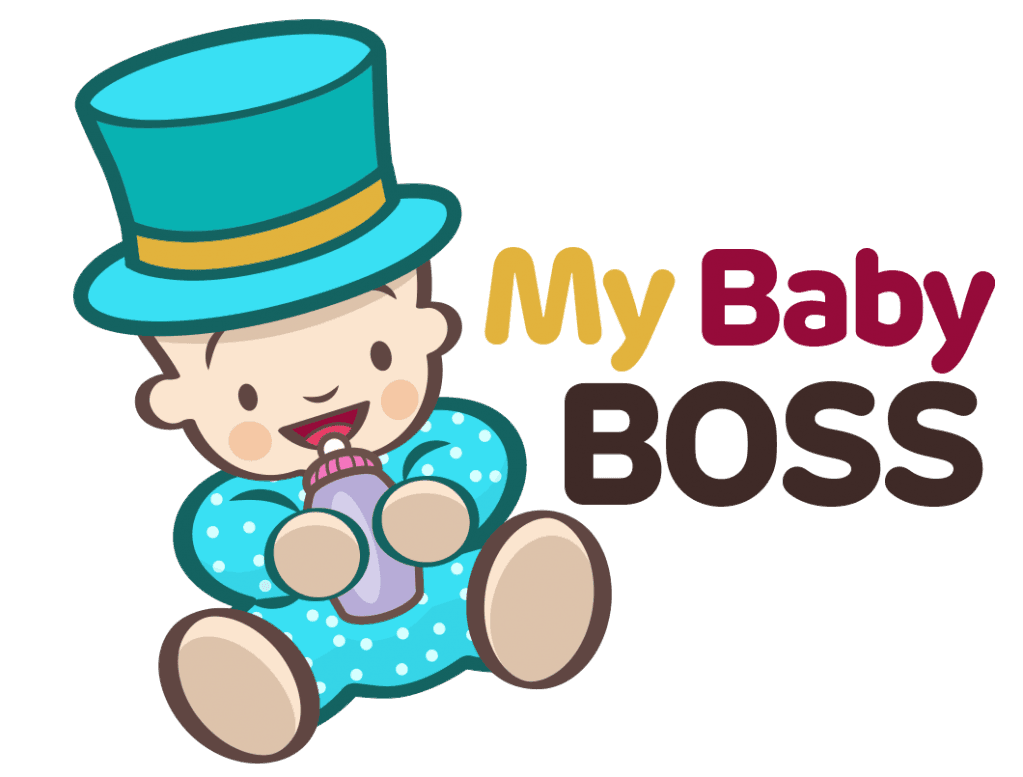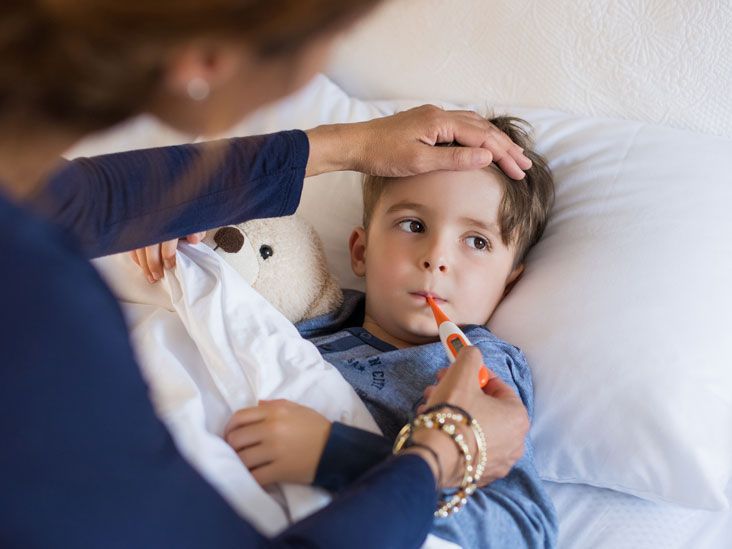
Fever is a common occurrence in small children. When a fever occurs, your baby’s body temperature rises, sometimes accompanied by other symptoms. This article includes some useful information about fever in infants so that parents know what to do if the situation arises.
Tip: According to the APP (The American Academy of Pediatrics): “Parents should not wake up a sleeping child to administer a fever-reducer. Antipyretics must be stored safely to avoid accidental ingestions.”
Understand the Fever in infants phenomenon:
What is a fever in infants?
A fever is defined as an abnormally high body temperature. Technically, a fever is any temperature above 98.6 F(37C), but in practice, a fever is not considered to be significant until the temperature is above 100.4 F (38C). As a parent, you should monitor the body temperature of your baby carefully. Your baby has a fever if any of the following signs of fever in infants is true:
- The temperature inside the anus is higher than 38ºC (100.4F)
- The temperature in the mouth is higher than 37.8ºC (100F)
- The temperature in the armpits is higher than 37ºC (99F)
- The temperature in the ears is higher than 38ºC (100.4F). Note: this doesn’t apply to babies under six months.
Parenting: Toddler spits out medicine, best way to crush pills
How can I check out the baby body temperature?
Before getting out your thermometer, check the baby’s body temperature with your hand. This is a simple but effective method because you will immediately be able to determine if they seem to be too hot. If their temperature worries you, measure it with a thermometer so that you can take note of a specific temperature in case you need to go to the doctor. One of the other symptoms of fever in infants is baby throwing up mucus.
A thermometer is a useful tool for measuring and indicating temperature:
The average temperature of the body when measured in the mouth is 97.6 F (36.5 C). This often ranges from 95.8F (35.5 C) in the morning to 99.4F (37.5 C) in the afternoon.
A baby’s temperature sometimes falls a little outside of the normal ranges due to movement, teething, thick layers of clothing, warm water bathing, or hot weather. Hot drinks and meals could also make the baby warmer than usual. As with anything when it comes to parenting, consistent monitoring is the key. For example, if you just bathed them, their skin will feel warm to the touch. This is normal. If, however, they still feel warm to the touch hours after their bath, you may have cause for concern.
Parenting: Baby sweating but no fever: causes and treatment
Your baby has fever, extra methods to check it out
In addition to the advice given above, you should also consider the following methods which provide more specific results:
- Measure the baby’s body temperature in the anus. This method may seem a little off-putting at first, but it is the most accurate way to measure a baby’s body temperature. The best tool for this is a rectal thermometer. Rectal thermometers have a higher degree of accuracy than other thermometers. This is why measuring this part of the body is a good idea. Underarm, forehead, and ear thermometers have a higher degree of error. The less accurate thermometers are, the more likely they can give a result that is higher than the real temperature, leading to unnecessary stress for the parents.
-
Fever in Infants can sometimes mean something else is wrong. It is possible to test blood and urine in order to determine if a bacterial infection is present. For more serious cases, it’s possible to test the spinal cord to check for meningitis.

Do you know: High Doses of Vitamin C and D May Not Curb Kids Colds?
How to reduce fever in infants
There are many ways you can reduce your baby’s fever (home remedies for fever in infants):
- For example, a fifteen-minute bath in lukewarm water can help bring the fever down. Make sure the water doesn’t go cold and make sure your baby doesn’t start to shiver. (New parent: see how to give your baby a bath here.)
- Keep a supply of digital thermometers in the house for times such as this. You can track the baby’s fever and subsequent recovery much better if you check their temperature at regular intervals.
- Dress your child in a lighter fabric. It’s difficult to see your child ill, even when it’s not serious. Often parents feel helpless and would do anything to help their baby get better as soon as possible. Gestures like adapting their clothing not only helps the baby; it helps the parent feel more in control of the situation, too.
- Use a sheet as bed-linen instead of a thick comforter. This will help them be more comfortable when they’re having difficulty sleeping due to their fever.
- Breastfeed or give your baby formula often. The nutritional goodness of breast milk and good quality formulas help to boost the baby’s immune system.
- You can even give your baby medicine to help bring their fever down. There’s a form of acetaminophen that is perfectly safe for infants. Never give your baby aspirin, as it has been linked to a condition called Reye’s syndrome. If going down the medicine route, make sure your baby falls into the correct age bracket for the product and always give the correct dosage. Never over-medicate your baby as this can make their immune system weaker, which will not help them later on in life.
Editor’s suggestion: How to Treat Colic in Babies
Common Fevers in Infants
-
Rubella: The signs and symptoms of rubella are difficult to detect, particularly in children. Symptoms generally appear between two and three weeks after exposure. Typical symptoms include a mild fever, headache, stuffy or runny nose, inflamed red eyes, enlarged lymph nodes at the base of the skull, the back of the neck, and behind the ears, a fine, pink rash that usually begins on the face, and aching joints. It’s difficult to know if a baby’s joints are aching, of course, so it’s best to be aware of the other symptoms, particularly the ones that can be physically seen. Rubella can last anywhere between 5 and 7 days depending on the strength of the baby’s immune system. Rubella isn’t serious, but it can lead to other complications including pneumonia, bronchitis and digestive disorders.
-
Convulsion Fever, or Febrile seizures as it’s more commonly known, only happens when there is a sudden rise in body temperature. It occurs mainly in children and is caused by a normal fever. The onset of a convulsion comes with little or no warning. In most instances, the seizure stops on its own. Febrile seizures are classified as either simple or complex. Simple febrile seizures are more common and the seizures typically last less than five minutes. Complex febrile seizures are more severe. They are either prolonged (longer than fifteen minutes), focal (they only involve one body part, for example the face), or recurring within a 24 hour time period.
- Convulsion fever often frightens parents. It’s difficult to watch your precious baby having a seizure.

Convulsion fever often make parent fear and don’t know how to do

Malaria can cause serious danger in children
Symptoms of malaria differ in children according to their age. A child younger than five years old will have symptoms including fever, shivering, the aforementioned irritability and drowsiness and poor sleeping and eating routines, vomiting, stomach pain, and rapid breathing. Hypothermia can also be a symptom when it occurs instead of a fever.
Most of the symptoms of malaria are also symptoms of other diseases. If you child has a high fever and chills, consult your doctor immediately just in case. The doctor will take a blood test and you’ll find out in a matter of days if your baby has malaria. A blood test is the only way to test for malaria, so it’s best to go as soon as any of the symptoms listed above manifest.
Editor’s suggestion: When can you put lotion on a newborn dry skin
Fever in Infants caused by flu is the physical manifestation of their body fighting it. This is a good sign, but be very wary as the flu can be dangerous for babies. Like malaria, flu symptoms include chills followed by a fever. Tiredness, head and body aches, a dry cough, sore throat, vomiting, and stomach pain are other symptoms to watch out for.
High Fever in Babies Less Than Three Months
The younger a child is, the more challenging it becomes to diagnose the type and severity of illness. If your child is in the neonate stage (0-28 days old) and has a rectal temperature of 38 C or higher, it’s recommended that they’re admitted to a hospital and receive a full septic workup. Keep an eye over your newborn carefully. If your child is in the young infant stage (29-90 days) they are usually assessed by using other guidelines to determine how ill they are. They are seen as low risk if they have a healthy appearance, had no previous illness, and if their fecal matter and urine seem normal. They are seen as high risk if they have any of the following: a toxic clinical appearance, an abnormal cry, or a fever of 38.5 C or higher. Bear these symptoms in mind and you’ll know what to do depending on these other factors.
Call IMMEDIATELY if
- Your baby is less than three months old.
- Your baby has a high fever over 40 C (104 F) and the situation does not improve after giving them medication.
- Your child manifests other symptoms including a headache, stiff neck, dizziness, or breathing difficulties.
Call within 24 hours if
- Your baby is between three and six months old
- Your child has a fever that has lasted more than 24 hours when it should’ve abated.
- Your child has a fever that lasts longer than three days.
- The fever went away but then came back.
If you need further information about fever in infants, please don’t hesitate to contact us. Nothing is more important than health, particularly when it comes to babies.
Fever in infants









hi,
Just would like to share with you my story:
Yesterday our little Luna of 16 months has got fever after vaccination, 37.5ºC in the afternoon. I’ve given her a quick bath of 10min and breastfed her a lot. It seemed to be better after the diner however it suddenly became worse at midnight (38ºC). Luna has sweated a lot, tired but brave. Then I did what my mother had told me when she was young mother: we slept naked together. I could make Luna’s body temperature down this way and keep her dry all the time. I have not slept much but it’s ok, at the morning Luna’s fever has gone away, this is the most important thing for me. She’s made my day with a shinny smile…
Hope that helps,
[…] Check out all amazon thermometer in deals in the full article on our baby blog. […]